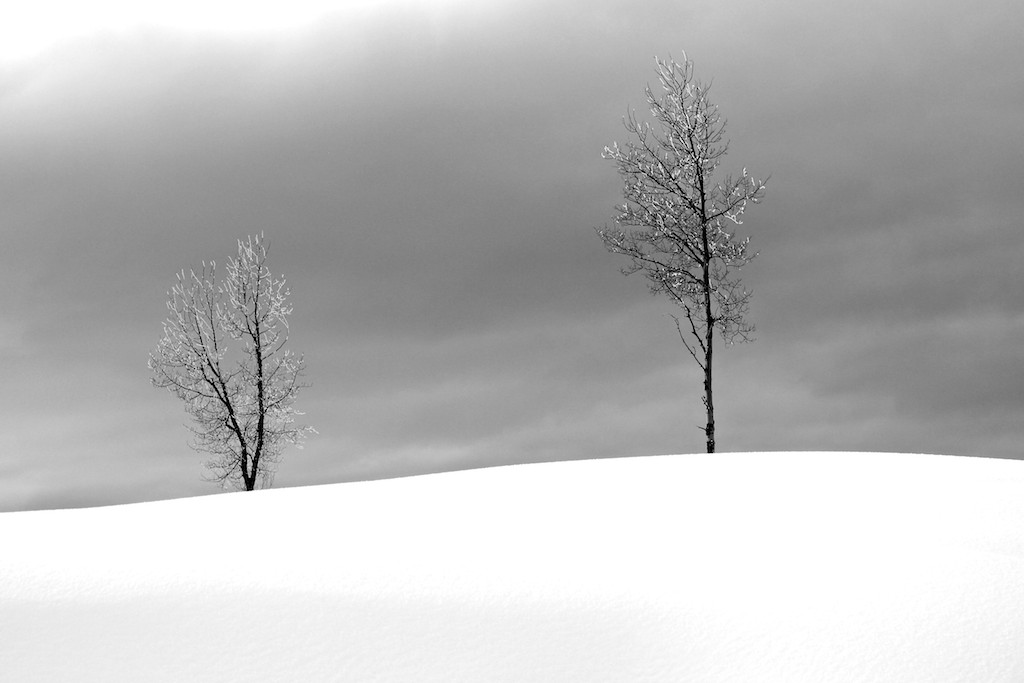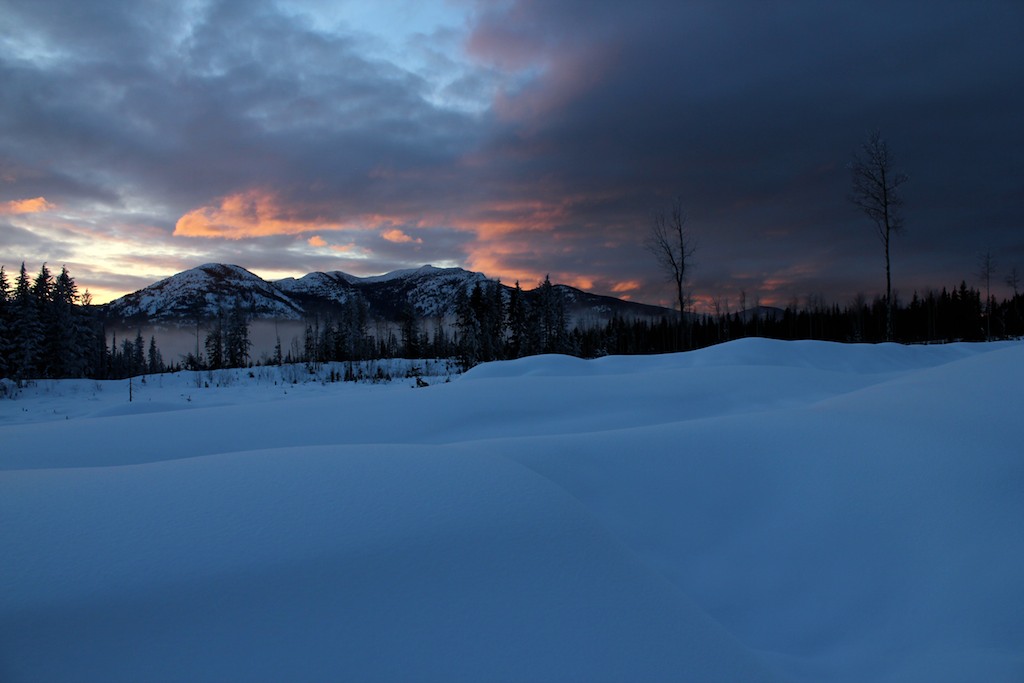Menu
Monday 11 Feb was a holiday in the province of British Columbia, Canada, as it was the newly declared “Family day” stat holiday. Other provinces such as Alberta, Saskatchewan, and Ontario have had this holiday for a while. I’m not sure why BC chose to have it on a different day as the other provinces are having theirs a week later on Feb 18. Anyway, we decided to take a short drive with the family over the Paulson pass to Grand Forks, BC to visit my 90 year old grandfather. It’s always special seeing our kids interact with their great-grandfather and to think about how it was around 80-85 years ago when he was experiencing childhood at a similar age. I of course packed my camera to seize the opportunity for family photos however I also knew that the winter light and snow conditions over the mountain pass could present some great photo opportunities. Enroute I very much wanted to stop but our need to arrive at a certain time required us to press on. I was hoping however that there could be an opportunity to catch the sun setting on the drive back and fortunately that’s exactly what happened. The photo on the left here was taken at around 5:30pm at approximately 1400 m elevation. I’m reading up on B&W post processing and am experimenting with a series of photo’s taken on this trip. The one below shows a landscape view which brings in another tree to the left. I was quite pleased with these photos particularly since they required me to position myself and the camera low to the ground which was frozen and snow covered. One of these pictures may very well get sent to SnapFish for a large format printing and framing to hang in the house some day.
The light was impressive so I had a fun 15 minutes or so grabbing different landscape photos. I wish I could have arrived earlier with my snow shoes as there were some angles I would have liked to have captured which required hiking to get at.
 The third photo in this post below shows the trees captured in the B&W shots from a completely different angle (see the same trees to the right in front of the dark clouds). This shot reveals the landscape behind the earlier viewed photos as well as the light conditions I was capturing. What’s surprising is how different the real situation is with regards to the actual height of the trees and the nature of the terrain around the trees in the photograph.
The third photo in this post below shows the trees captured in the B&W shots from a completely different angle (see the same trees to the right in front of the dark clouds). This shot reveals the landscape behind the earlier viewed photos as well as the light conditions I was capturing. What’s surprising is how different the real situation is with regards to the actual height of the trees and the nature of the terrain around the trees in the photograph.
Now the perspective and contrast differences of these photo's serve as a metaphor for differences in a diverse set of observations and experiences gathered as micro-narratives with SenseMaker®. What we see, and the perspective we see it from, is always limited. Our experiences and observations reflected in our micro-narratives are filtered not only by our biases, but also by the way we cognitively process all that is hitting our senses. In fact the sharper and narrower we focus the more we reinforce our biases and the greater the risk we miss detecting signals of opportunity and threat. SenseMaker® is designed to stimulate a deeper understanding of a diversity of perspectives, beliefs, and motivations so that individuals or teams tasked with decisions have a better sense of how to situate their decisions for greater effect. For example, if one employee observes or experiences a series of activities or behaviours at work, it's important to understand and make sense of their perspectives as they relate to each specific context as discrete moments or situations. Other employees may see the same situations differently and may or may not make the same observations or reflections. In aggregate and in large volumes, the collective experiences, observations, and perspectives yield a much deeper understanding of complex contexts from multiple points of view. Tools that work with this diversity and a broad range of meaning in large volumes, will be much better positioned to assist in making sense of complex situations in a more authentic and representative way. Tools which seek to make things clear in a simple way, and do not have the capacity to absorb and work with diversity, introduce risk by creating a narrow and false sense of reality. At its core, SenseMaker® is specifically designed to work with diversity of perspectives, observations, and experiences.

Just as photos can reveal very different perspectives on the same landscape, large volumes of signified narrative gathered with SenseMaker® reveal contrasting perspectives and patterns of meaning that give us a more authentic sense of reality. However just like in photography, even with a greater volume and diversity of perspectives one is always working with a partial and incomplete sense of the whole.
Cognitive Edge Ltd. & Cognitive Edge Pte. trading as The Cynefin Company and The Cynefin Centre.
© COPYRIGHT 2024

For many years I've argued that expertise is a mixture of training and experience; knowledge ...
I was catching up on back copies of the New Statesman today and came across ...